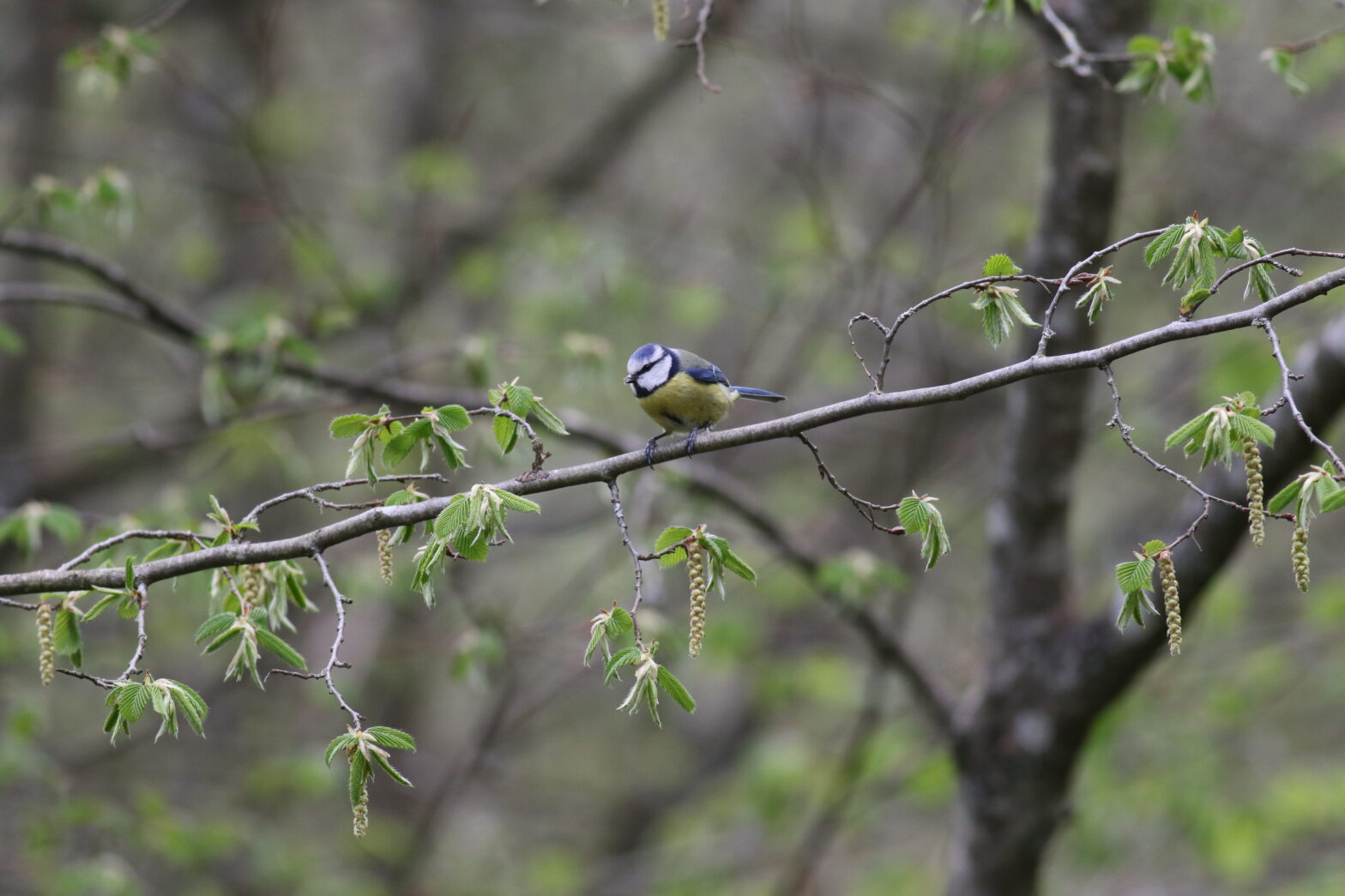Watch our recent online event all about birds.
So far at Hazel Hill Wood we have recorded just over 40 species of bird – there are probably a few more which we either haven’t noticed yet or haven’t remembered to write down! We have lots of common bird species here which you might be familiar with, including:
- blue tit
- great tit
- blackbird
- wren
- song thrush
- great spotted woodpecker
- buzzard
- tawny owl.
We also have some species which are less common and quite exciting, including:
- woodcock
- marsh tit
- hawfinch
- cuckoo
- raven.
There are a few species which are common in the UK but quite exciting (for me, anyway!) at Hazel Hill Wood. A pair of mallards are seen very occasionally at the pond, plus heron and kingfisher. We have a fantastic wildlife pond which is full of invertebrates like diving beetles, dragonfly larvae and mosquito larvae – which could all be bird food! It’s not big enough to support wetland birds all the time, but sometimes they visit when they fancy a change of scenery for the day.
Recording what is here and when is really important. It helps us get a better idea of how good the site is for wildlife, and also helps us understand in the longer term if the way we manage the wood is having a positive or negative impact on wildlife. Bird populations in the UK have declined considerably over the last 50 years mainly because of habitat loss and intensification of farming. Though some species are doing much better – including ones that thrive in gardens. If you enjoy watching the birds in your garden or out of your window, you could sign up to the BTO Garden BirdWatch – a weekly survey, where you contribute valuable data all year round.
Nesting
Most birds make nests for breeding, but not all. Some don’t build a nest but find natural or manmade places to lay their eggs and rear their young – a good example is the peregrine falcons on Salisbury Cathedral. Some birds nest and roost in houses and other buildings, both new and old, and some species prefer hollow trees.
Lots of birds make use of man made nest boxes, which help make up for natural habitat loss, e.g. removal of mature trees before they have developed enough deadwood to provide natural nest holes. A local Scout group made and donated nest boxes to us at HHW in return for a weekend at the wood in 2018. We currently have 12 small nest boxes which were used by great tits and blue tits last year, plus 2 tawny owl boxes, one of which had two chicks in last year.
Surveying the boxes – we follow the British Trust for Ornithology’s (BTO) guidance, and animal welfare is top priority.
How to be a good birdwatcher
Firstly – you can just enjoy watching and listening to birds without knowing anything about them! Check out our dawn chorus recording for a mindful moment. But if you want to learn more, basic kit includes:
- binoculars
- a bird book, RSPB bird identifier app and/or Merlin bird ID app
Look for: size, shape, colour and habitat. Some books and the RSPB bird identifier app handily use a scale compared to birds you know – robin, blackbird, pigeon, mallard. Basic colour plus prominent patches, e.g. smaller than robin with red on face and yellow on wing – probably a goldfinch. Whilst you’re watching a bird, you could write notes, draw pictures or take photos and videos.
It helps to learn from someone else. You may be able to find a local guided walk to join later in the year, or even a club if you really want to get into it. Lots of birders are keen to share their knowledge.
Hearing is just as important as seeing when trying to identify birds. Most can be identified to species level just by their songs and calls. This takes quite a bit of practice! The first ones I learnt were when I could see them singing – birds like robin, blackbird, starling and song thrush. They like to show off! Learn birdsong with Lucy Lapwing.
If you enjoy feeding your garden birds, it’s really important to keep your bird feeders clean, otherwise you could end up doing more harm than good, as you are encouraging birds to get much closer to each other than they would naturally. Check out WildlifeKate’s fantastic live bird feeder videos and more.
Happy birdwatching!
Charley Miller, Conservation and Education Coordinator

